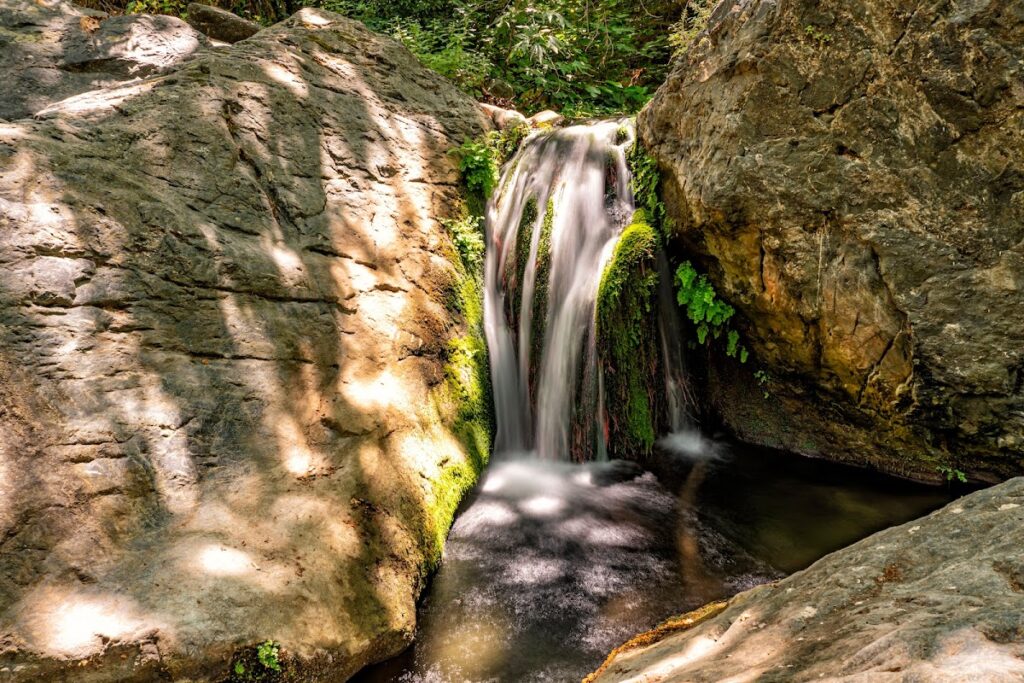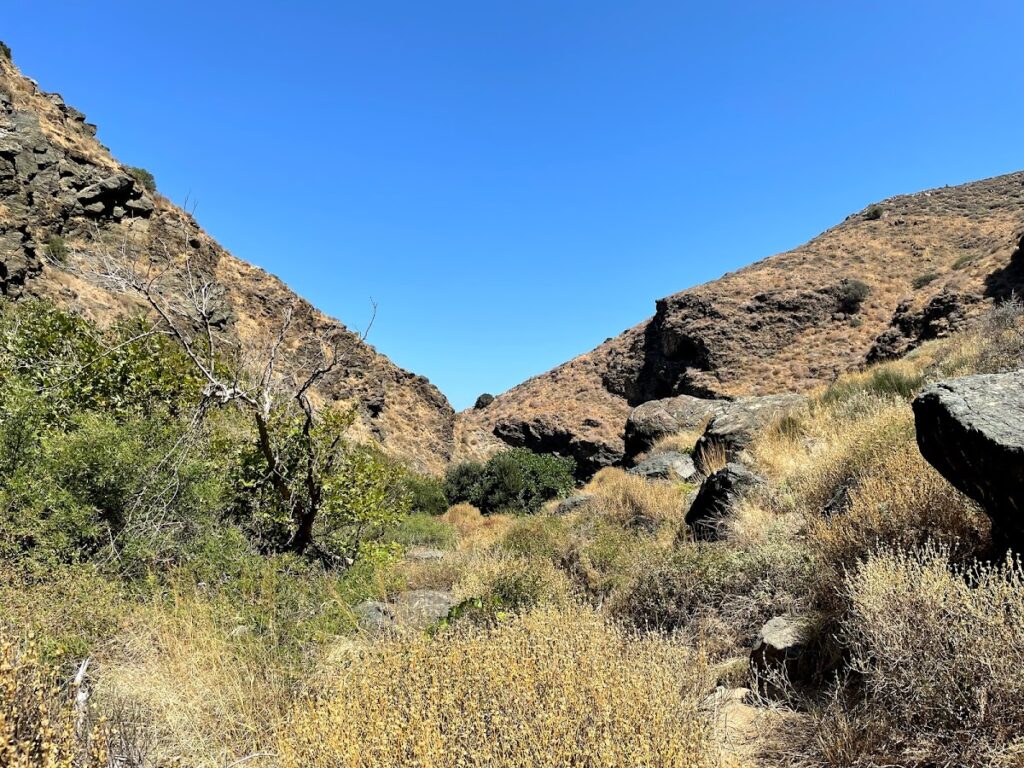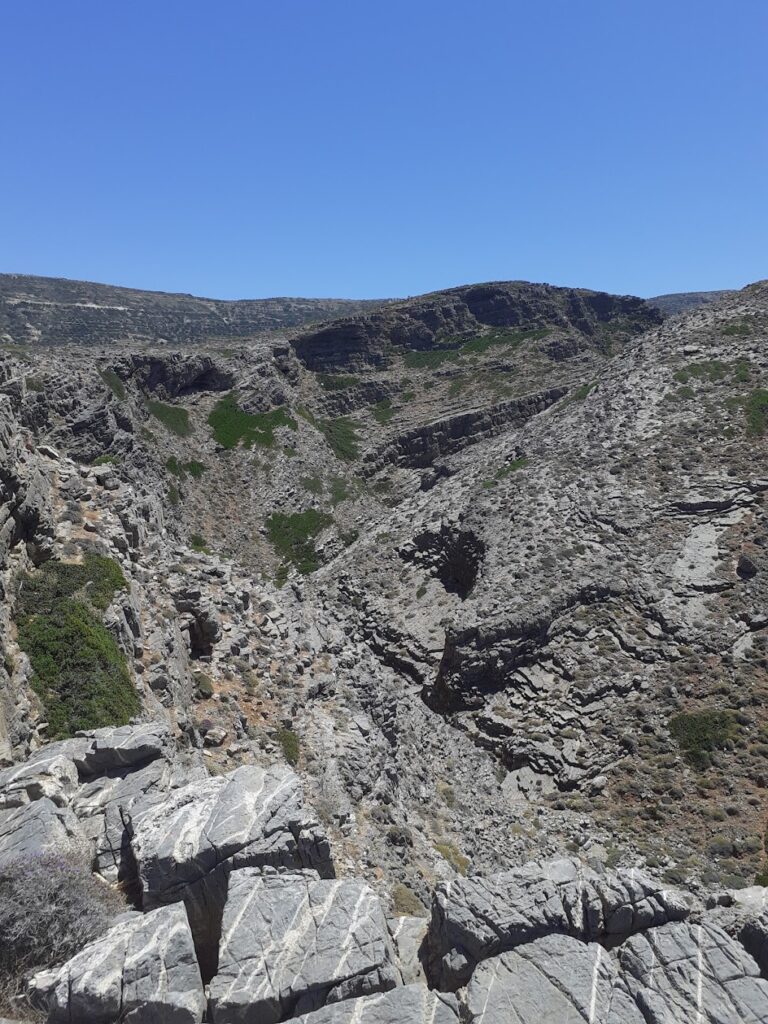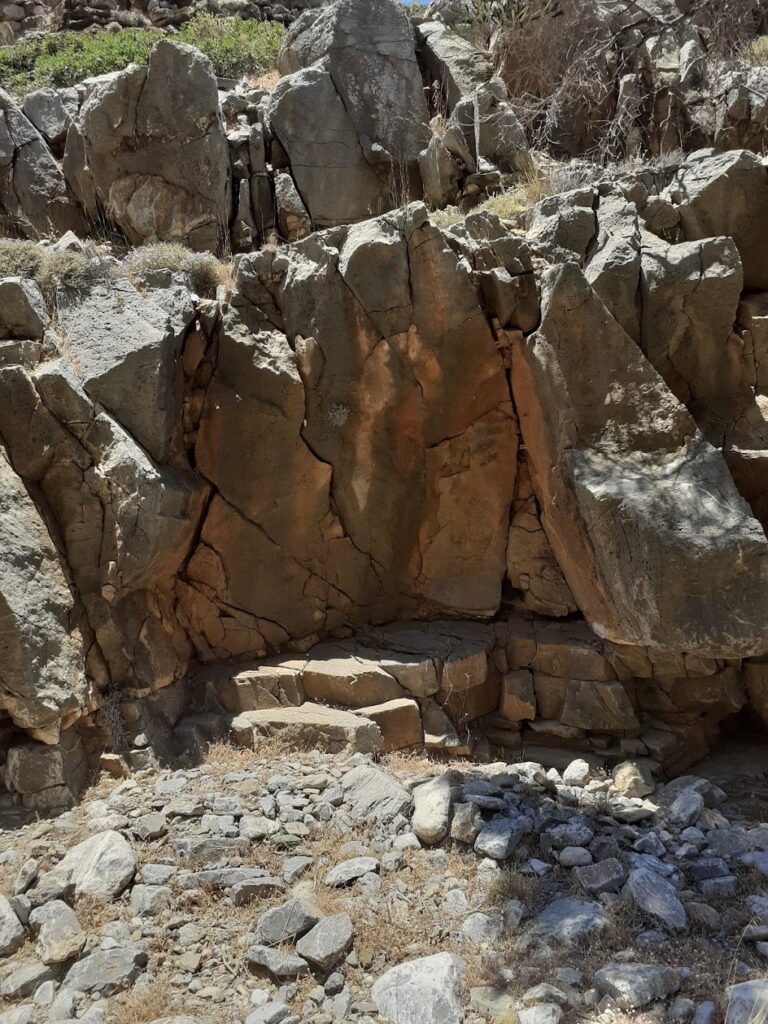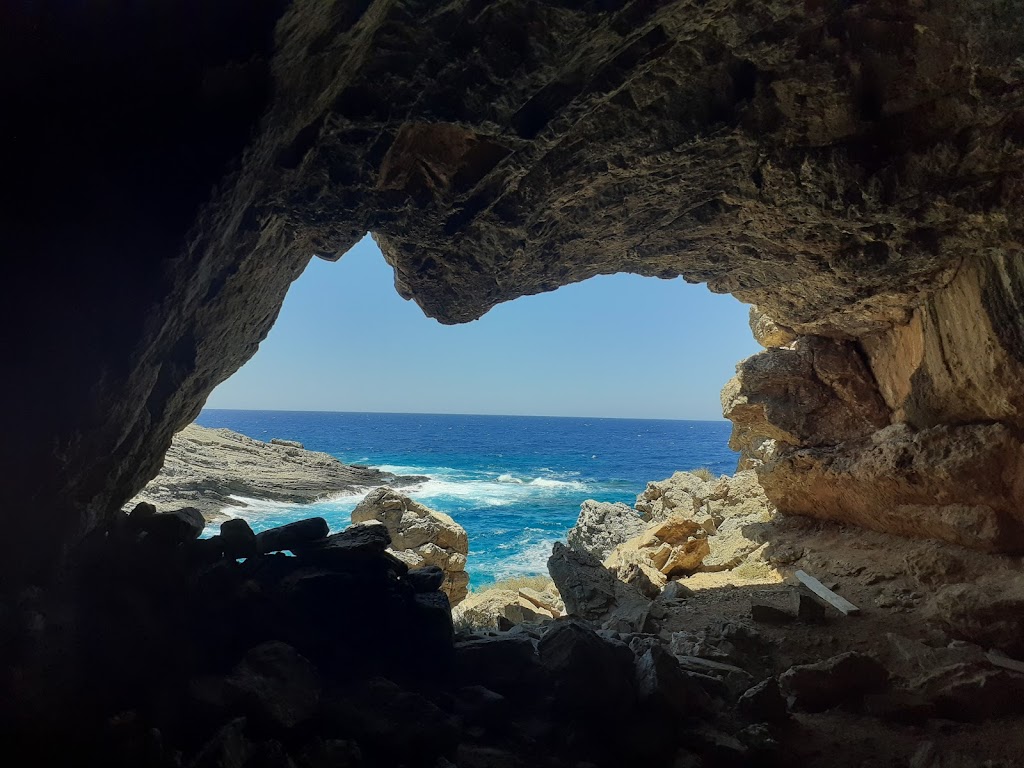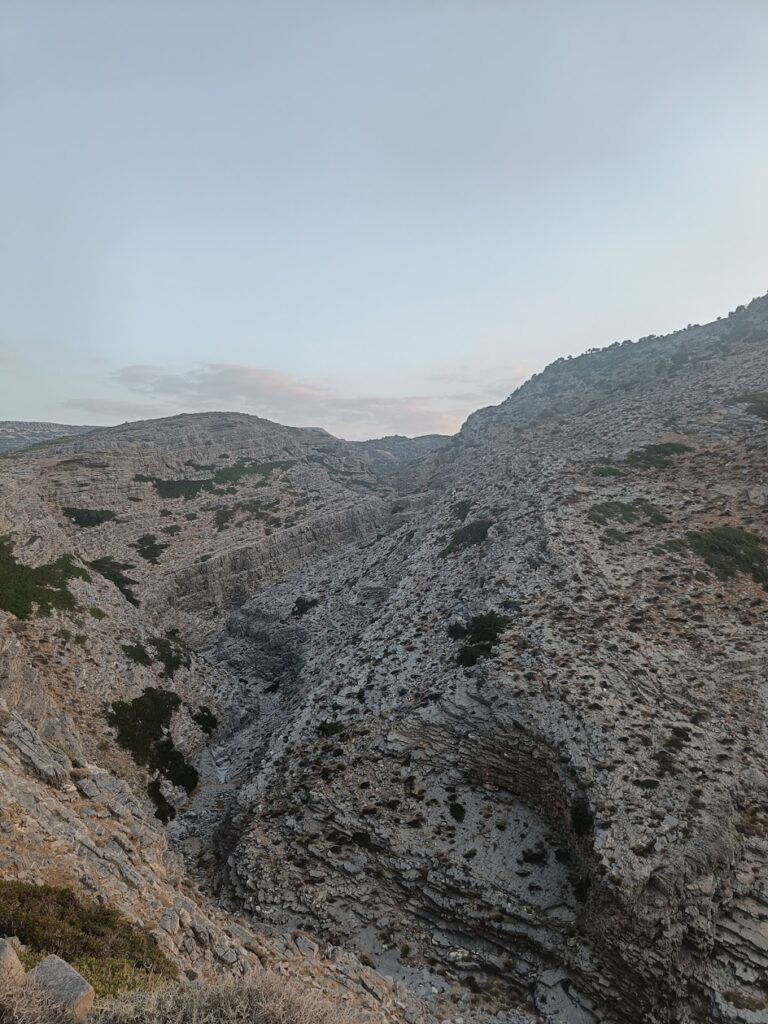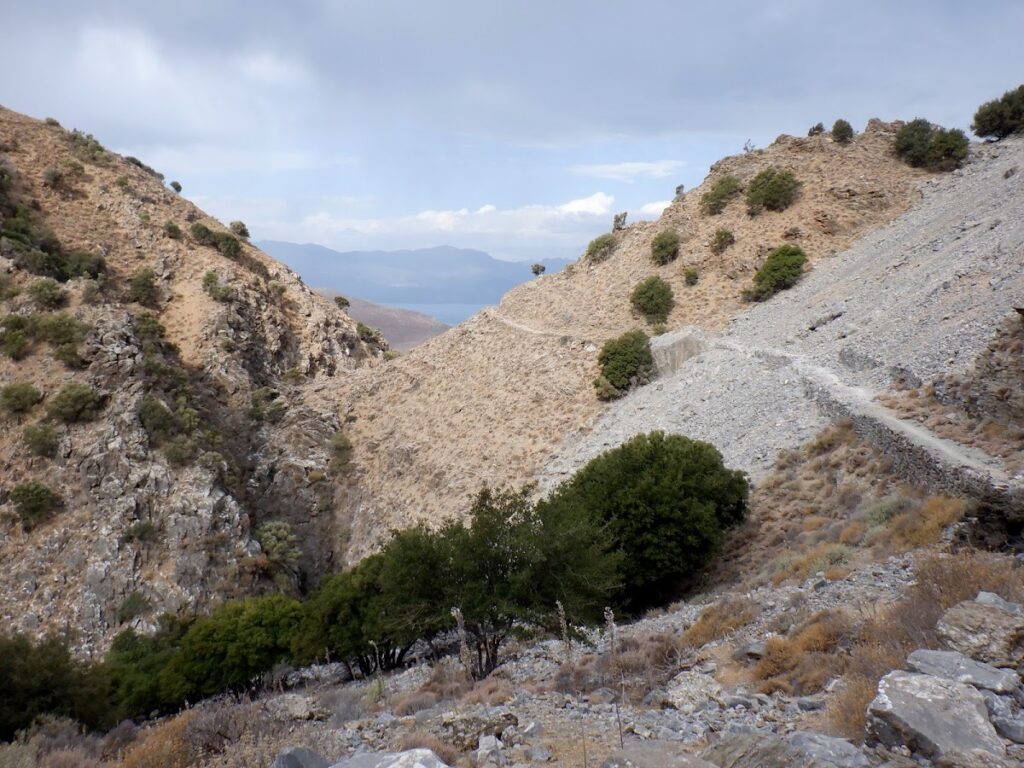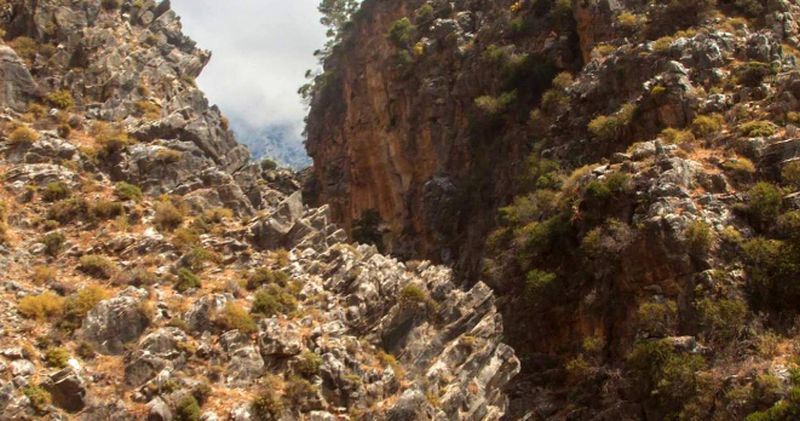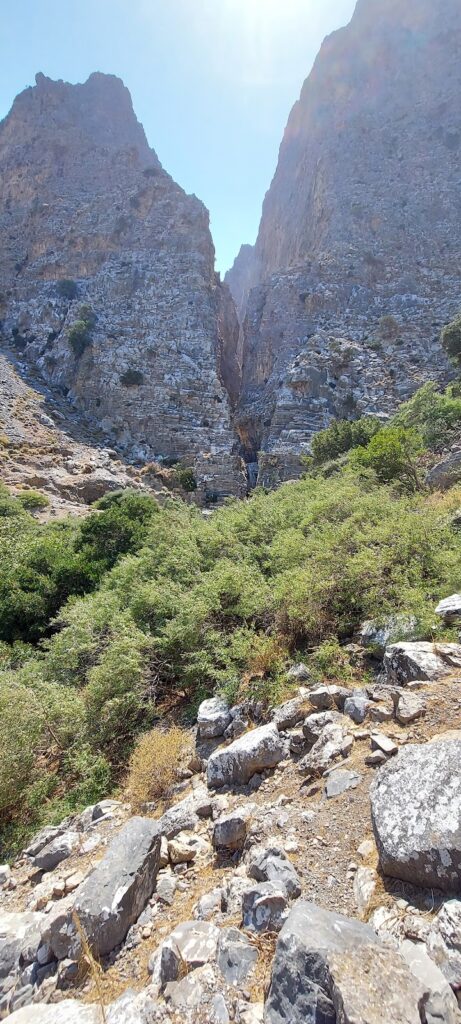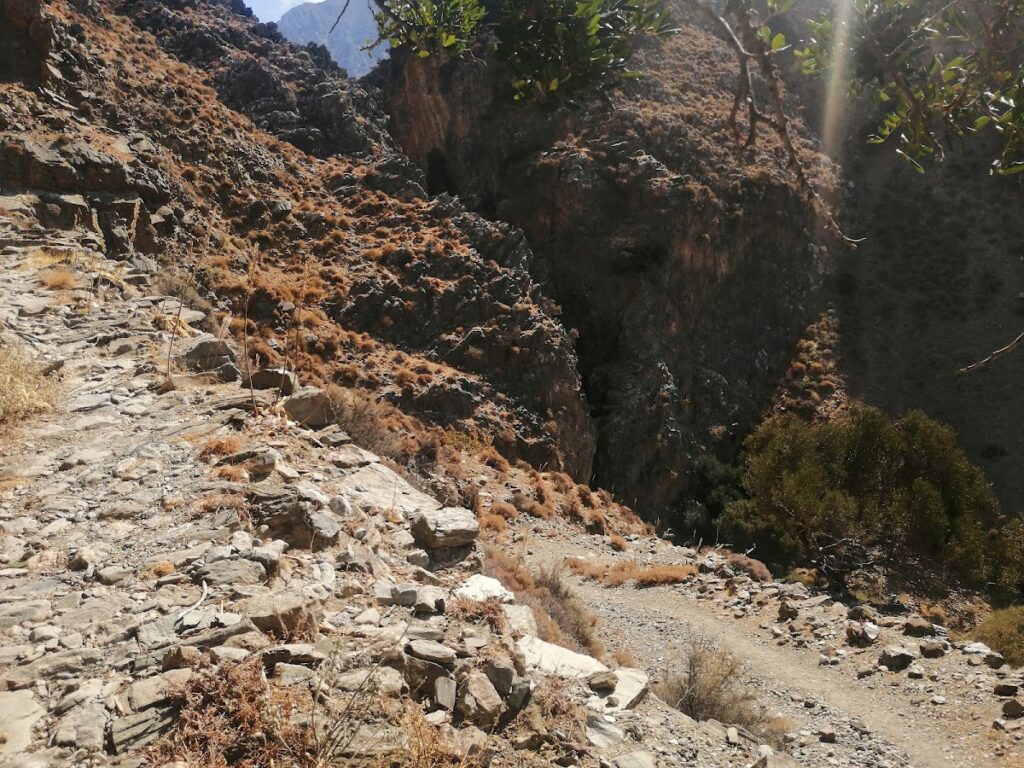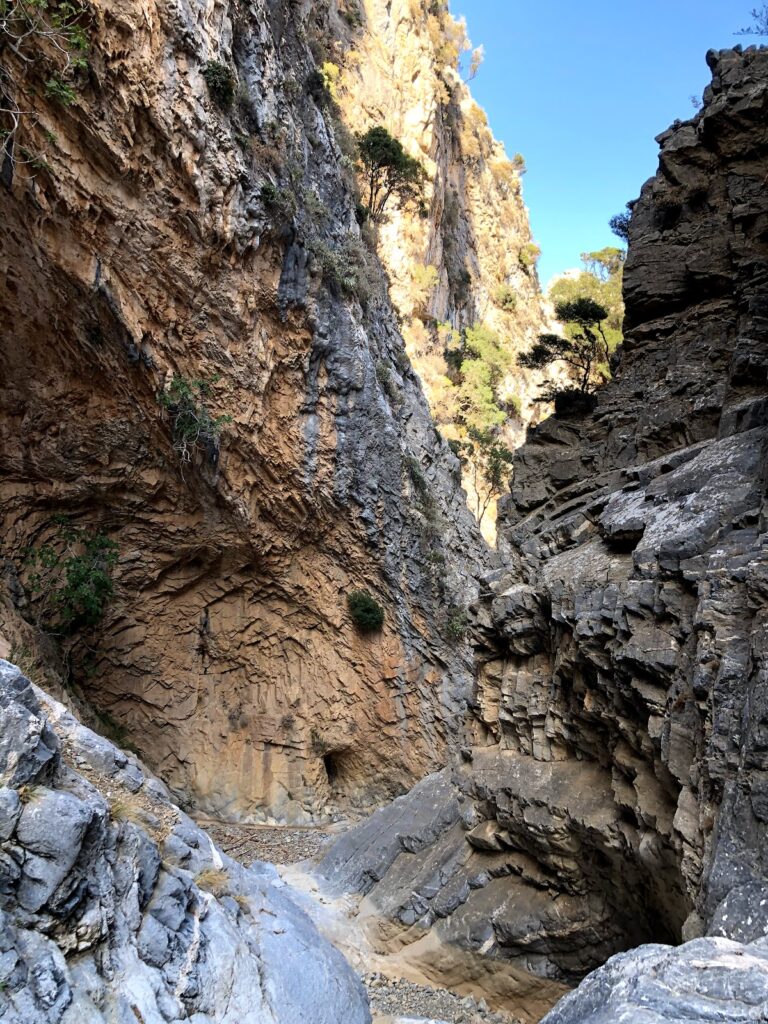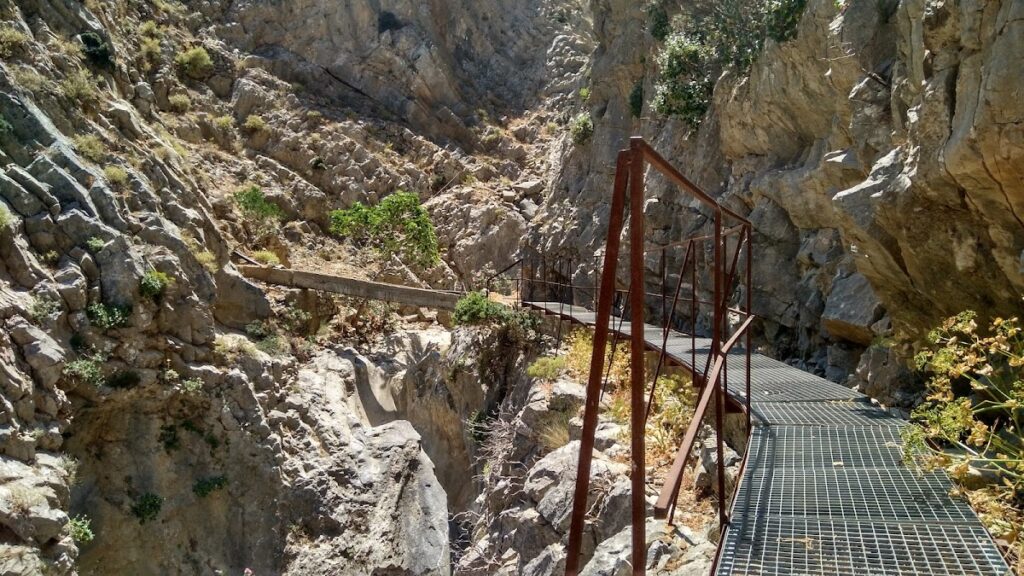Gorges to hike and walk near Éxo Moulianá, in Lassithi region
List of Gorges near Éxo Moulianá
- 2.1 km
- Richtis Gorge
- 5 km
- 3 h
- Hiking
The Richtis Gorge, situated in the Lasithi Prefecture on Crete’s northern side, lies between the cities of Agios Nikolaos and Sitia. The trail begins just outside Exo Mouliana village and concludes at Richtis beach, to the east of Kalavros village. The entire route spans roughly 3 kilometres, with an elevation difference of around 350 meters between the starting point and the beach. Even in the summer months, the gorge retains a plentiful water supply, utilized for local agriculture. The water in the gorge is collected from the Drymias peak (918m) of the Orno range via the Lachanas and Mesa Mouliana streams, which converge near the trail’s starting point.
Depending on the hiker’s speed, the journey to the beach takes approximately three to four hours. The trail commences from the 19th-century stone-arched Lachanas bridge, a historic site where Christians reportedly killed local Turks attempting to reach Sitia and board a ship to Turkey during the population exchange between Greece and Turkey.
The path continues through a verdant landscape along the river, set against the stunning backdrop of Eastern Crete. The air is filled with the aroma of platans, oleander, and sage, and the scent of fresh herbs constantly shifts. Another notable feature is the old water mills that hikers encounter along the path, a testament to the past.
The crowning glory of the gorge is the breathtaking Richtis waterfall, which stands over 20 meters tall and forms a small pond at its base (the term “richtis” translates to “waterfall” in the Cretan dialect). The waterfall maintains its water flow even in the summer, providing a wonderful spot for a revitalizing dip. The trail concludes at the gorgeous pebbly Richtis beach, which features a small park with tamarisk trees, stone seats and tables, and a water fountain offering drinkable water.
Warning: To protect the delicate stream flora and fauna, please refrain from using sunscreen protection when swimming in rivers.
Tip: Many visitors choose to park their car on the main road at Exo Mouliana and walk down the paved road to the Lahanas bridge. By driving and parking next to the Lahanas bridge, you can save around 30 minutes of walking time. From there, it takes about 1.5-2 hours to reach the waterfall. For those less mobile or with young children, the quickest way to reach the waterfall is to drive along the narrow paved road to Richtis beach and walk for around 30 minutes in the opposite direction of the river.

- 5.5 km
- Koudoumis Gorge
- 4 km
- 3 h
- Hiking
The Koudoumis canyon, situated approximately 27km west of Sitia, is close to the village of Tourloti. You can reach the canyon by foot, but be aware that there are six minor but steep rappels that need careful navigation.
Also known as the Tourloti Gorge, the canyon’s exit is near Tourloti while its entrance is at the small plateau of Monokara, which is a few kilometres further south. The stream that flows through it carries water to the Mavro Seli beach near Mochlos. The canyon’s striking rock formations coupled with the vibrant nature during spring make trekking through the Koudoumis gorge a fascinating experience.

- 7.4 km
- Charkomatas Gorge
- 3 h
- Hiking
The Chalkomatas, also known as Charkomatas Gorge, is situated close to the village of Chamezi in the province of Sitia. The gorge begins where a dirt road ascends towards the Prophet Elijah temple and Liopetro fortress. The vegetation in the gorge is sparse, but the limestone geological formations are striking. The path along the usually dry riverbed is mostly smooth and relatively easy to navigate.
Approximately halfway along the route, elevated 60m above the riverbed, lies the Geloudospilios cave. Its name derives from the Geloudes, demonic entities that take the form of women and are said to drain the life from newborns by drinking their blood.
A three-hour trek through the gorge leads to the stunning Roussa Limni beach. The beach is located below the Chalkomatas cave, where, as per local folklore, pirates once concealed their valuable loot. There are rumors that locals even detonated the cave in their quest for gold. Alternatively, Roussa Limni can be accessed via a road from the nearby Papadiokambos beach, which is just a short walk away.
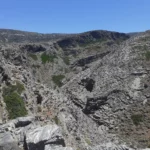
- 8.9 km
- Agii Pantes Gorge
- 3 km
- 1.5 h
- Hiking
The Agii Pantes Gorge, situated adjacent to Skopi in the Sitia province and close to the Faneromeni Monastery, is one of the most accessible walking locations in Crete. The well-marked trail follows the Skafidaras river bed, offering a shaded walkway courtesy of the numerous platan trees. Within the canyon, there are two freshwater springs, Koutsounari and Hosto Nero, the latter of which is nestled within a cave. The gorge’s exit leads to Limni beach (by Platani).
In the winter months, the area that becomes flooded transforms into a significant wetland. Near the gorge’s exit, you can marvel at the white limestone formations that resemble large Pleurotus mushrooms. The Agii Pantes (All Saints) church, located near the gorge’s exit, gives the gorge its name.

- 11.5 km
- Pefki Gorge
- 4.5 km
- 2 h
- E4 trail
The Pefki Gorge, also known as Anegyrous Gorge, is a stunning small gorge located in East Crete. Its beauty is characterized by breathtaking rock formations molded by nature and lush greenery. The gorge extends for approximately 4.5 km, with an elevation difference of 300 meters between the entrance and exit. The gorge begins south of Pefki village and concludes at the Aspros Potamos settlement, 2km north of Makrigialos. The stream running through the gorge collects water from the area south of the Romanati peak (937m) and carries it to the Analipsi beach. The gorge features a well-defined path that traces the riverbed for most of its length. At certain points, benches are available for rest. A 2-hour journey through the gorge is part of the E4 European long-distance path.
The Journey
The journey through the gorge commences slightly south of Pefki, where the familiar black and yellow E4 signs direct you to the entrance, adjacent to the old Ilias water mill (1925). From here, an easy path skirts the edges of the canyon before descending to the river bed at the heart of the gorge. The canyon is vibrant with pine trees, while the riverbed is predominantly surrounded by platans and herbs. Spectacular white rock formations, unique to Crete and over 100 meters tall, flank the sides of the canyon.
Upon reaching the southern exit of the gorge, you’ll find a spring of clean, drinkable water for refreshment. The gorge’s exit is located in the Pisokaminos area, near the Aspros Potamos village, rather than by the sea. Further along, you’ll encounter the remarkable large rock known as Volakas Sarakinou (Saracen’s rock). Legend has it that a Saracen pirate once took refuge here after being left behind in Crete. The rock is covered in small pebbles, believed to be the remnants of an old children’s game. The kids would throw stones at Volakas, and if a stone stayed on the rock, they would find food at home. If not, they wouldn’t. Following Aspros Potamos village, you’ll reach the main road connecting Makrigialos and Pefki. If no one is waiting to pick you up by car, you’ll need to walk the remaining 2km to Makrigialos.
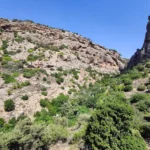
- 12.2 km
- Havgas Gorge by Kavousi
- 1 km
- 1.5 h
- Canyoneering equipment needed
In the eastern region of Crete, the term Havgas is frequently encountered, often used to name canyons and in some variations such as Ha, Havgoudi, and so on. One of the many gorges bearing the Havgas name is located near Kavousi, in the Ierapetra province. This gorge is essentially the lower segment of the wild Mesonas gorge, which originates from the Thripti plateau.
The section known as Havgas begins close to the Minoan settlement of Azorias and concludes its path in Kavoussi. Despite its short length of only 700m, traversing it via its stream demands technical (canyoning) gear due to the presence of six stunning waterfalls. The tallest of these waterfalls reaches 20 meters in height and retains water well into the late winter.
As an alternative, the gorge can be navigated by foot along the ancient hiking trail that skirts the canyon from its eastern side, linking Avgos to Kavoussi.

- 12.2 km
- Mesonas Gorge
- 4 km
- 3 h
- E4 trail
Located on the northern slopes of the Thripti range, near Kavoussi village and Avgos settlement, you’ll find the short but incredibly wild and imposing Mesonas gorge. This 4km long gorge requires technical canyoneering equipment to traverse its steep waterfalls. The gorge connects the Thripti Plateau to the Kavoussi plain, with its exit close to the Azorias archaeological site. The same stream forms the technical Havgas gorge, crosses the fertile Kavoussi plain, and eventually empties onto Tholos beach.
Starting from the Tsamadi position near Thripti village, there’s a hiking trail that runs high above the gorge bed, following the concrete channel used to transfer spring water to Kavoussi. The breathtaking views of the canyon, surrounding mountains, and Mirabello bay are beyond words. The trail descends to ancient Azorias, from where you can approach Kavousi via the ancient path parallel to the Havgas Gorge, or through the dirt road passing the Monumental Olive Tree of Azorias.
For canyon enthusiasts wanting to traverse the river bed, it’s worth noting that the water levels are generally low, with the flow ceasing mid to late spring depending on seasonal rainfall. The gorge starts out smoothly, with the hiking portion exceeding the steep descent sections. The last part of the gorge changes dramatically, narrowing significantly and forming high waterfalls, with the highest rappel at 30m. A small group of canyoneers can descend its 9 rappels in about 3 hours.

- 13.1 km
- Orino Gorge
- 5.5 km
- 4 h
- Hiking
In the vicinity of the verdant and water-rich springs of Orino village, we encounter one of Crete’s most precipitous rivers. The river’s sources are found high up on the Abelia plateau, nestled within the Thripti and Papouri mountains. These springs quickly form a river which traverses the village square before making its way into the rugged Orino canyon. To navigate the canyon along the riverbed, canyoneering gear is necessary. The river carves out stunning waterfalls and pools, with the final section being particularly breathtaking. The last trio of waterfalls at Peristerionas are among Crete’s most beautiful. The river’s water volume is also noteworthy, particularly in the typically dry region of East Crete. Even in the summer, the gorge maintains a steady water flow.
The river continues its journey downstream, passing through the Red Butterflies canyon before reaching Koutsouras beach. Despite suffering considerable damage in a 1993 fire, the gorge’s vegetation remains lush, serving as a green oasis in the warm eastern Crete. The gorge begins near the exit of the Orino Gorge and concludes at Koutsouras after a 3-4 hour walk (starting from Orino village and circumventing the wilder parts of the Orino gorge). Signposts along the route guide the way. At the route’s commencement, there are a few small springs and waterfalls which dry up during the summer. Winter, however, makes hiking in the gorge quite challenging. The gorge earns its name from the red butterflies that flutter amongst the bushes and flowers, creating a truly unique spectacle. Regrettably, their numbers have significantly dwindled in the aftermath of the fire.
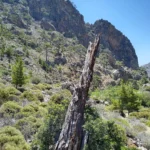
- 14.5 km
- Agriomandra Gorge
- 0.5 km
- 0.2 h
- Hiking
The Agriomandra gorge, though brief in length, leads to the charming, small beach of Agriomandra. To reach it, one must traverse the verdant meadows to the west of Kavoussi, known as the Lakos Ambelion area, via a dirt road until the gorge’s entrance is reached.
Commencing from this point, a straightforward trail leads to Agriomandra beach within a mere 10-minute walk. As you approach the beach, you’ll notice several petite caves embedded within the rocks. One of these has been constructed from stone and serves as a church, built during the Byzantine era by a hermit and dedicated to St. John the Theologian. This church is still occasionally used for baptisms.
A short walk further, approximately 650 meters from the parking area, you’ll arrive at the stunning pebble beach, graced with crystal-clear, emerald waters.
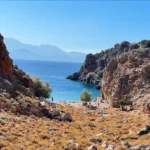
No results available
ResetGorges in other nearby areas
No results available
Reset
